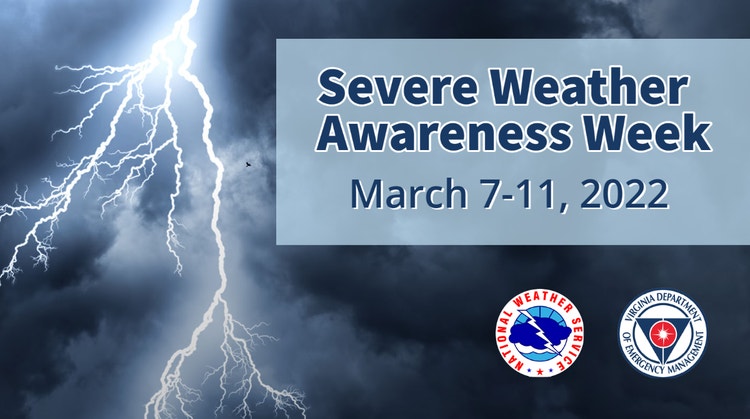Understanding Flood Risks: A Comprehensive Guide For Severe Weather Awareness Week Day 5

Table of Contents
Identifying Your Flood Risk
Knowing your vulnerability to flooding is the first step in effective flood risk management. This involves assessing both your location and the characteristics of your property.
Location, Location, Location
Your geographic location is a primary factor determining your flood risk.
- Floodplains: Living in a designated floodplain significantly increases your chances of experiencing a flood. Floodplains are areas prone to inundation during periods of high water.
- Online Flood Maps: Utilize online resources like FEMA's Flood Map Service Center (FEMA's website) to determine your specific flood risk level. These maps provide valuable information about your property's flood zone designation.
- Proximity to Water: Homes near rivers, streams, creeks, lakes, or coastal areas are at a higher risk of flooding. The closer you are to these water sources, the greater the potential for flood damage.
- Historical Flood Data: Research historical flood data for your area. Understanding past flood events can provide valuable insights into the frequency and severity of flooding in your location. This information helps you prepare for future events.
Property Characteristics
The characteristics of your property also influence its vulnerability to flood damage.
- Older Homes: Older homes may lack modern flood-resistant building techniques and materials, making them more susceptible to damage.
- Drainage: Poor drainage around your property can exacerbate flooding by preventing water from dispersing properly. Standing water increases the risk of water damage.
- Foundation and Materials: The type of foundation (e.g., crawl space vs. basement) and building materials significantly affect a home's flood resistance.
- Elevation: The elevation of your home relative to surrounding areas is a critical factor. Higher elevations offer better protection from floodwaters.
Preparing for a Flood
Proactive planning and preparation are essential for minimizing the impact of a flood. This involves developing a comprehensive flood preparedness plan and implementing flood mitigation measures.
Developing a Flood Preparedness Plan
A well-defined plan ensures your family's safety and helps you respond effectively to a flooding event.
- Family Communication Plan: Establish a communication plan outlining how family members will contact each other during and after a flood. Include contact information for out-of-town family members.
- Evacuation Routes: Identify multiple evacuation routes and safe meeting places. Plan alternative routes in case your primary route is impassable.
- Emergency Kit: Assemble a comprehensive emergency kit including water, non-perishable food, medications, first-aid supplies, flashlights, batteries, and blankets.
- Important Documents: Secure important documents (insurance policies, identification, financial records) in waterproof containers or a safety deposit box.
- Utility Shut-off: Learn how to turn off your gas, electricity, and water main to prevent further damage during and after a flood.
Implementing Flood Mitigation Measures
Taking preventative steps reduces the risk and severity of flood damage.
- Elevate Appliances: Elevate electrical outlets and appliances to protect them from floodwaters.
- Flood Barriers: Install flood barriers or watertight doors to prevent water from entering your home.
- Flood Insurance: Consider purchasing flood insurance, even if you don't live in a designated floodplain. Flood insurance is often not covered under standard homeowners' insurance.
- Gutter Maintenance: Regularly clean gutters and downspouts to ensure proper water drainage and prevent water buildup around your foundation.
- Landscaping: Improve drainage around your property by grading the land to direct water away from your home.
Responding to a Flood
Knowing how to react during and after a flood is critical for minimizing risks and damage.
Evacuation Procedures
Promptly following evacuation orders is crucial for your safety.
- Evacuation Orders: Follow official evacuation orders issued by local authorities immediately.
- Evacuation Routes: Use your pre-planned evacuation routes, ensuring you know alternate routes as well.
- Securing Your Home: Take necessary steps to secure your home before evacuating (e.g., unplug appliances, move valuables to higher ground).
- Stay Informed: Remain updated on weather reports and official announcements through reliable sources.
During & After the Flood
Your actions during and after the flood determine the extent of the damage and your safety.
- Avoid Floodwaters: Never attempt to drive or walk through floodwaters; they may be contaminated with sewage and other harmful substances and contain hidden dangers like downed power lines.
- Document Damage: Take photos and videos of flood damage to your property for insurance claims.
- Contact Insurance: Contact your insurance company to report damages as soon as it is safe to do so.
- Seek Assistance: Seek assistance from local emergency services if needed. They can provide critical support during the aftermath of a flood.
Conclusion
Understanding flood risks is paramount for safeguarding your family and property. By proactively identifying your risk level, creating a comprehensive preparedness plan, and implementing appropriate mitigation measures, you can significantly reduce the impact of flooding. Remember, early preparation is key. Don't wait until the next severe weather event; take action now to minimize your flood risks. Learn more about flood safety and prevention by researching resources available in your area and developing a personalized flood safety plan today.

Featured Posts
-
 Is Naomi Campbell Banned From The 2025 Met Gala The Anna Wintour Conflict Explored
May 26, 2025
Is Naomi Campbell Banned From The 2025 Met Gala The Anna Wintour Conflict Explored
May 26, 2025 -
 Naomi Kampel Oikogeneiakes Diakopes Stis Maldives Se Ilikia 54
May 26, 2025
Naomi Kampel Oikogeneiakes Diakopes Stis Maldives Se Ilikia 54
May 26, 2025 -
 Increased Gold Demand A Consequence Of Trumps Eu Trade Dispute
May 26, 2025
Increased Gold Demand A Consequence Of Trumps Eu Trade Dispute
May 26, 2025 -
 Hasil Fp 1 Moto Gp Inggris 2025 Jam Tayang Di Trans7 And Ringkasan Latihan
May 26, 2025
Hasil Fp 1 Moto Gp Inggris 2025 Jam Tayang Di Trans7 And Ringkasan Latihan
May 26, 2025 -
 New Horror Movie Sinners Filmed In Louisiana Release Date Revealed
May 26, 2025
New Horror Movie Sinners Filmed In Louisiana Release Date Revealed
May 26, 2025
